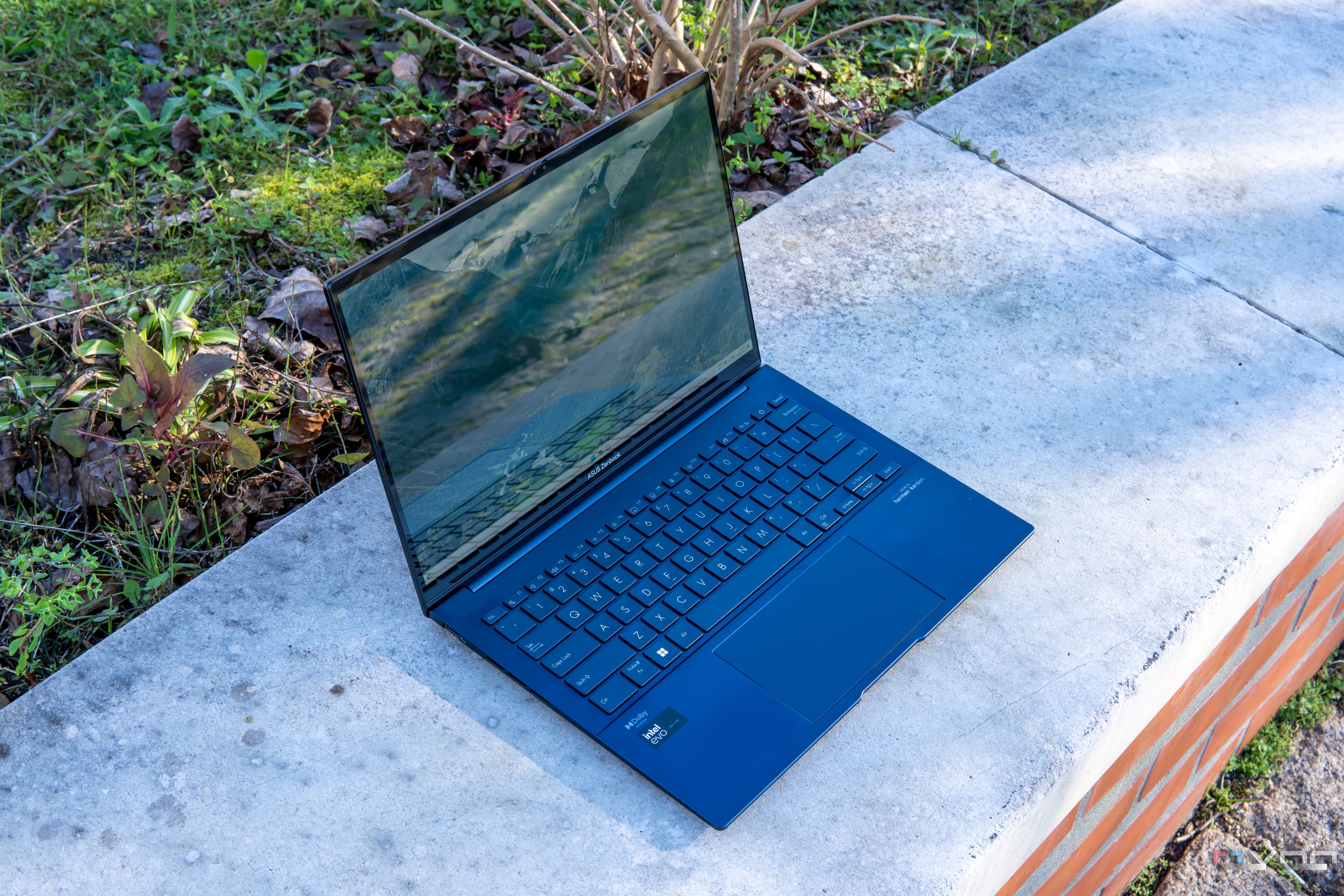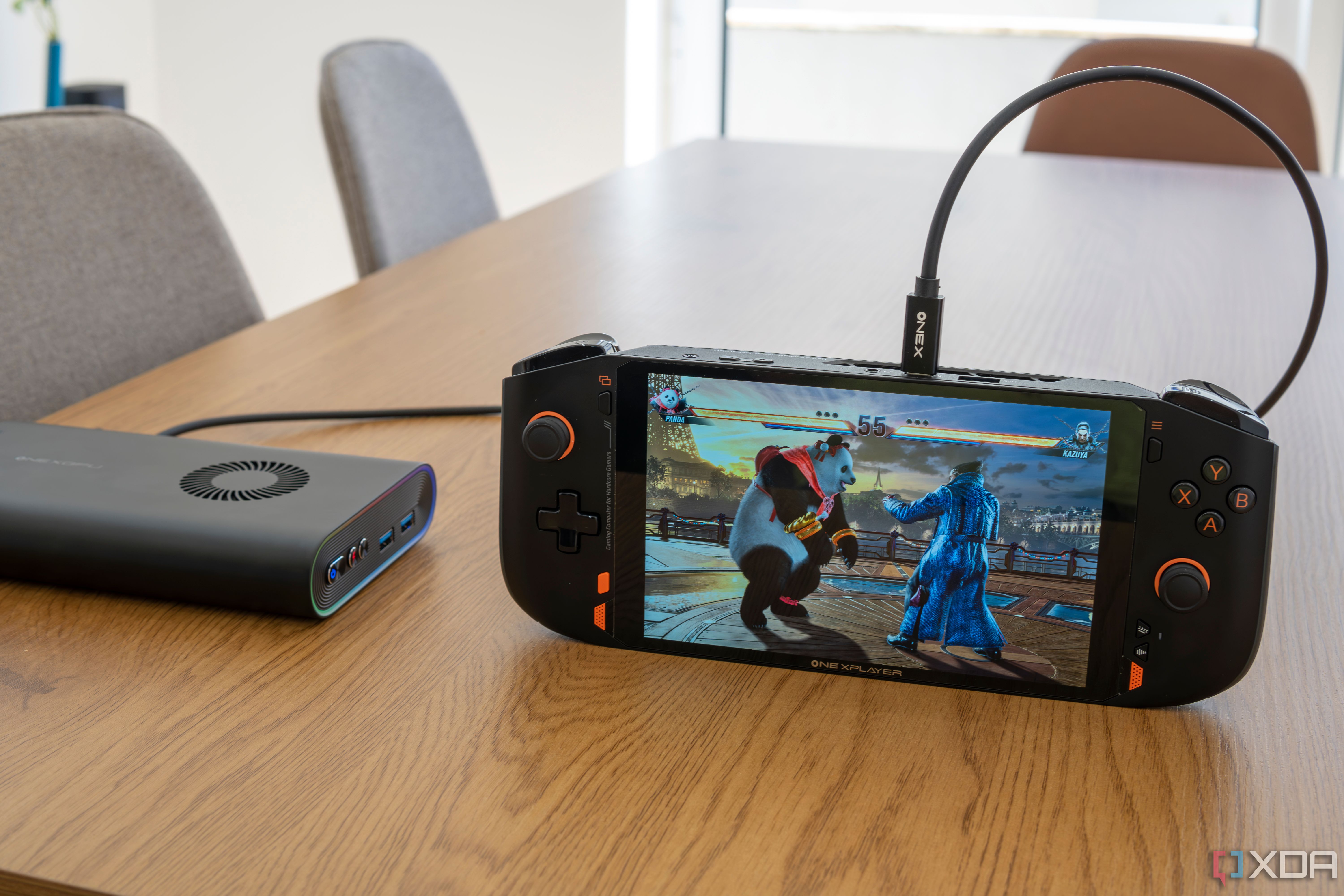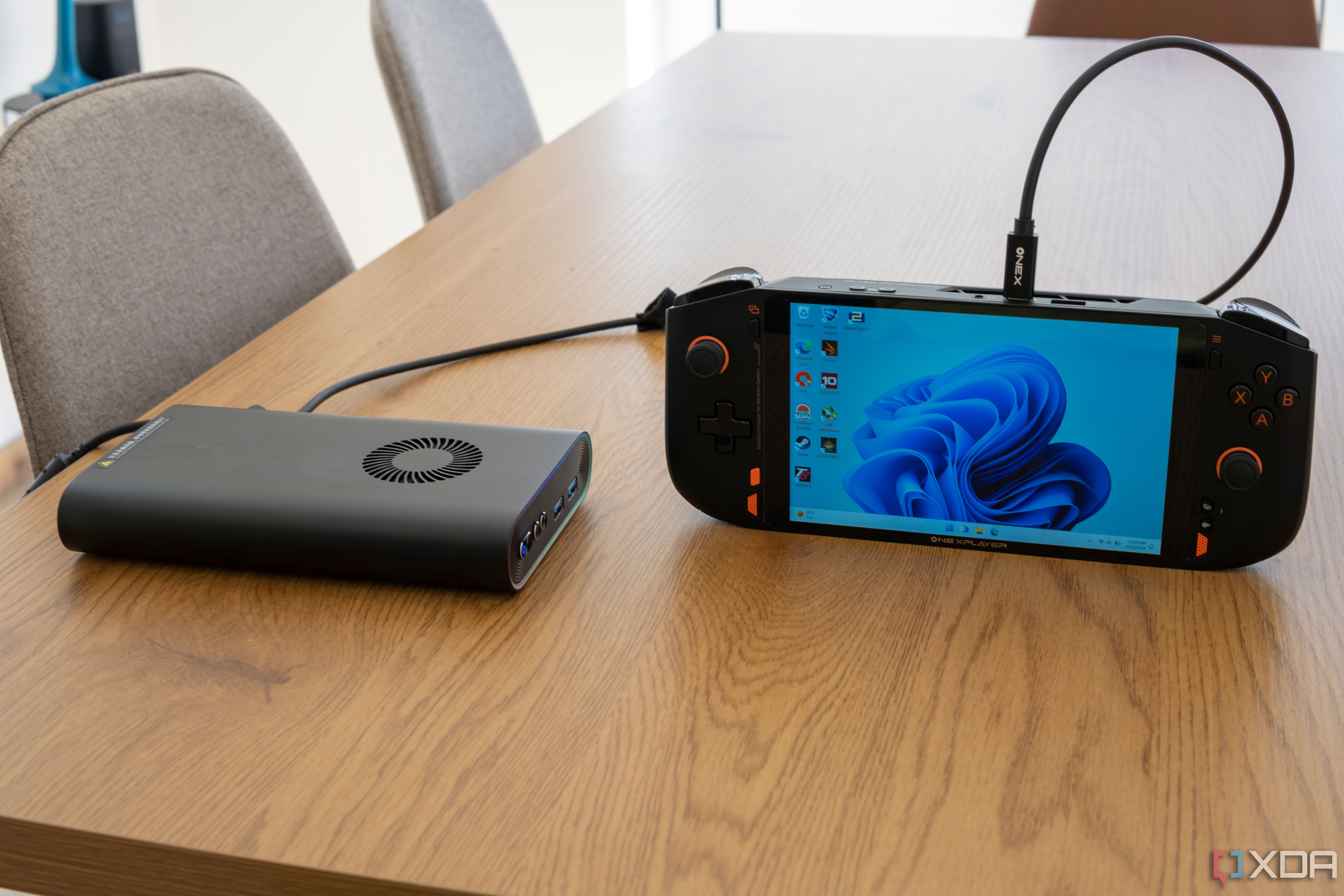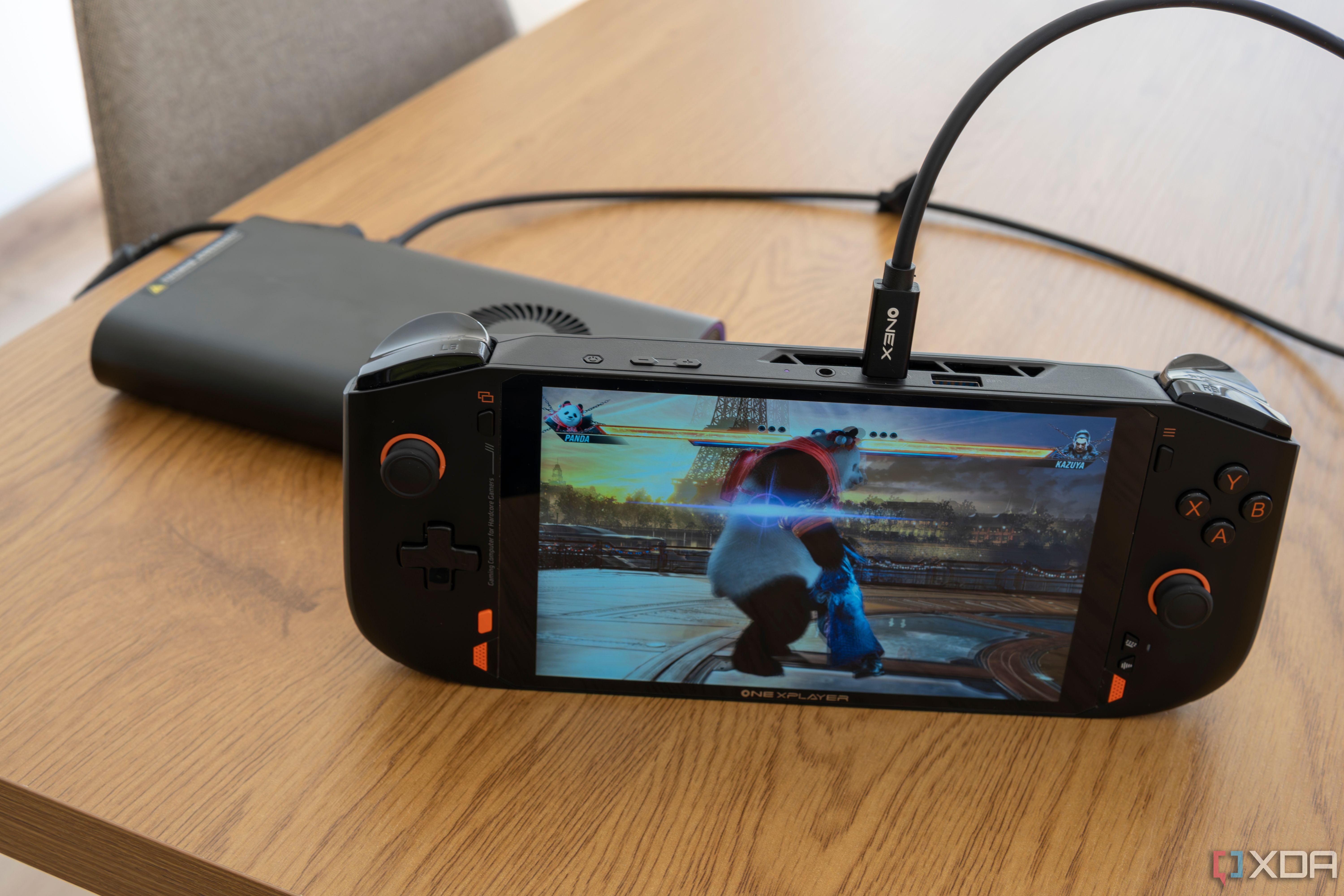Summary
- External GPUs like the OneXGPU significantly boost gaming performance on handhelds, quadrupling GPU power.
- Productivity tasks see massive improvements with external GPUs, such as ten times faster rendering in Lightroom.
- Consider the price and compatibility risks before investing in an external GPU, despite clear performance benefits.
Since the Steam Deck made a splash in the gaming scene, many other PC gaming handhelds have popped up, and one thing many of them have in common is that they have support for external GPUs, with many companies selling their own alongside their handheld.
The idea behind external GPUs is that, since the handhelds themselves tend to have low-power processors (so they have decent battery life and portability), you might want more power when playing at home, so you can plug in the external GPU and up the graphics settings. Recently, I got my hands on the One XPlayer OneXGPU, and I decided to test that for myself to see just how big of a difference it makes, and it's very noticeable.

One Xplayer Mini Pro review: A powerful, but expensive Steam Deck competitor
With an AMD Ryzen 7 processor and RDNA2 graphics, the One Xplayer Mini Pro can run a lot of games very well, but it may be hard to justify.
Benchmarks
The external GPU makes a big difference
For my tests, I paired the OneXGPU with the One XPlayer Mini Pro I reviewed back in 2022, as well as the Asus Zenbook 14 OLED in some cases. For reference, the OneXGPU uses an AMD Radeon RX 7600M XT, which is a laptop GPU with up to 120W of power. Both of the PCs I connected it to have no discrete graphics, and while the One XPlayer Mini Pro uses AMD's RDNA2 integrated GPUs, the Zenbook 14 OLED has Intel Arc graphics built in.
Let's start with the One XPlayer Mini Pro, where I ran both PCMark 10 and 3DMark Time Spy Extreme.
|
Score without external GPU (AMD Ryzen 7 6800U + Radeon 680M, 28W) |
Score with external GPU (AMD Ryzen 7 6800U + Radeon RX 7600M XT, 28W) |
|
|---|---|---|
|
PCMark 10 |
Overall: 6,250
|
Overall: 6,506
|
|
3DMark Time Spy Extreme |
Overall: 1,258
|
Overall: 4,484
|
As you can tell right off the bat, the difference in the score for 3DMark Time Spy Extreme is huge, more than tripling the score of the One XPlayer Mini Pro by itself. Most of that is attributed to the GPU performance alone, which is four times higher than the integrated GPU inside the handheld. CPU performance also gets a nice uplift, maybe because the GPU side of the package is used less, leaving more headroom for the CPU to be pushed a bit harder.
PCMark 10 is a more general test, so the difference is much smaller overall, since most of the tests are based on the CPU. Where you see the biggest difference is the digital content creation section, and this difference mostly comes from the rendering and visualization tests. Here, the One XPlayer Mini Pro by itself scored 8,421, and the external GPU boosted that to 11,842. That score is just diluted with all the other tests, so the difference seems smaller.
Intel processors seem to benefit less
I was very curious to see if it made any difference running these tests on an Intel-based machine, so I also tried the external GPU with the Asus Zenbook 14 OLED laptop. This laptop has Intel Core Ultra processor with Arc integrated graphics, so it's a bit more modern, too. Here's how it fared:
|
Score without external GPU (Intel Core Ultra 7 155H + Intel Arc) |
Score with external GPU (Intel Core Ultra 7 155H + Radeon RX 7600M XT) |
|
|---|---|---|
|
PCMark 10 |
Overall: 6,245
|
Overall: 6,442
|
|
3DMark Time Spy Extreme |
Overall: 1,541
|
Overall: 3,672
|
Interestingly, despite the newer hardware, the Asus Zenbook 14 OLED didn't perform better, maybe because the One XPlayer offers power options to lock the power draw at a higher level (28W), while the Zenbook just relies on Windows' power settings. I believe the Asus Zenbook 14 OLED also has some cooling issues or maybe it's because my unit is relatively early in production. Even when I reviewed the laptop itself, I noticed scores were often lower than other Intel Core Ultra laptops.

Asus Zenbook 14 OLED (2024) review: A terrific laptop for travel with few compromises
The Asus Zenbook 14 comes with a sharp OLED display and Intel Core Ultra processors elevating every aspect of the experience.
However, what's even more interesting is that the performance boost from the GPU is quite a bit smaller on this machine. The graphics performance still gets a big boost, but CPU performance doesn't really get better, and in some cases, it was significantly worse with the GPU plugged in. I'd need to run tests on some other laptops to see if this is an outlier, but the focus is on the GPU here, and the difference is definitely big in 3DMark's Time Spy Extreme test. The rendering and visualization tested in PCMark also got a big boost, from 5,880 to 8,352, but because other components fluctuated a lot, the final score also doesn't change that much.
Real-life tests
Gaming
Of course, what we really want to know is how this translates to real-life performance, and here, things get interesting. Most of the gaming tests I ran were on the One XPlayer Mini Pro, and the results were mixed. Note than in all these tests, I was still using the built-in display, not connecting to an external monitor. Here's a quick rundown:
|
Graphics settings |
Average FPS without external GPU |
Average FPS with external GPU |
GPU usage |
|
|---|---|---|---|---|
|
Rocket League |
Max settings, 1920x1200 |
90FPS |
100FPS |
Without external GPU: 100% With external GPU: 70% |
|
Elden Ring |
Max quality, RT medium, 1920x1200 |
23FPS |
33FPS |
Without external GPU: 100% With external GPU: 90% |
|
Risk of Rain 2 |
1920x1200 |
62FPS |
130FPS |
Without external GPU: 100% With external GPU: 50%-90% |
|
Tekken 8 |
High, 1920x1200, AMD FSR 1 |
31FPS |
60FPS |
--- |
Obviously, performance improved very significantly across the board, but there are some things worth mentioning here. For one thing, Rocket League didn't get nearly as big of a boost as it should have, especially considering the GPU wasn't being pushed as hard. The frame rate was uncapped, so I'm not sure why the GPU wasn't being fully utilized.
Elden Ring also got a relatively small boost, though I suspect this may be because of ray tracing being enabled, since AMD typically struggles with it. The difference in performance would probably be much bigger with ray tracing off.
Risk of Rain 2 and Tekken 8 were where the improvements were most obvious, with double the framerate or more. It's also worth noting that the external GPU held the same 60FPS in Tekken 8 when I set the rendering quality to Ultra instead of High, so there was some headroom to get better quality with the external GPU.
I also tried Rocket League on the Asus Zenbook 14 OLED, and here the performance improvements were a bit more obvious. At max settings and 2880x1800 resolution, the integrated GPU ran the game at a playable, but unpleasant 42FPS. Plugging in the external GPU took that up to 73FPS, so the experience was much better. GPU usage was nearly 100% on the external GPU, too, so there seems to be some issue with Rocket League on the handheld I tested, but the potential for more performance is definitely there.
Productivity
One thing I also wanted to test was productivity, like video editing, so I tried rendering a video using AV1 encoding and the default settings in DaVinci Resolve. That video is my review for Fences 5, which is about three minutes long and exported in 1080p.
The default settings do change depending on whether you use the Intel or AMD encoder, so this isn't exactly an apples-to-apples comparison, but with the integrated GPU, the Asus Zenbook 14 OLED exported the video in 1 minute and 40 seconds. With the external GPU, that went down to 1 minute and 10 seconds.
Another test I tried, albeit this was on a different PC (the Geekom Mini IT13), was running the AI Denoise tool in Adobe Lightroom. This is just part of my workload, and while the Core i9-13900H processor by itself takes 2 minutes and 52 seconds to generating the denoised image, adding the external GPU takes that down to a mere 18 seconds. Yes, it's almost ten times faster. I've actually made a habit of plugging in the GPU whenever I'm working in Lightroom now.

Geekom Mini IT13 review: A tiny PC for all your work needs
Geekom specializes in making mini PCs, and the MIni IT13 offers plenty of performance and ports for its tiny size.
Problems with external GPUs
There are a couple of things worth noting with my experience with the OneXGPU. One is the obvious fact that your mobility is compromised. With a gaming handheld, it will be best to set it down and use a keyboard and mouse (or a wireless controller), because if you're holding it in your hands, you run the risk of disconnecting the GPU if you move it around too much. In some instances, when launching a game, the GPU actually disconnected even though I thought I was completely still.
Then there's a problem with this specific unit where the HDMI output on the GPU doesn't seem to work with my primary monitor. The monitor works with other HDMI output devices and the GPU works with other monitors, so I'm not sure what the issue is here, but it's something to keep in mind. The GPU also has DisplayPort outputs, which do work with my main monitor, so it's not a huge deal for me.
Should you get an external GPU?
The performance benefits of using an external GPU are very apparent, and if you want to play your games on a larger screen with higher quality, it goes a long way in allowing you to do that. GPU performance can almost quadruple this way, so it's no joke. And this is just an AMD Radeon RX 7600M XT. If your device supports other GPUs, such as the Asus ROG Ally supporting up to an RTX 4090, you can definitely get a ton more performance.
But you also have to consider the price here. The OneXGPU costs $759, or $699 with a discount at writing time. That's not terrible, but most other options will cost even more. A more typical external GPU will set you back hundreds of dollars for the enclosure alone. It's also a bit of a gamble if an external GPU will play nice with your current hardware and games, so it's always a risk.
Still, the benefits are certainly there, and it's nice having a GPU that you can freely connect to different devices to get a boost in performance. You can check out the OneXGPU below if you're curious.

One Xplayer OneXGPU
The OneXGPU is an external GPU featuring an AMD Radeon RX 7600M XT to enhance gaming experiences on gaming handhelds and laptops. It also includes an M.2 SSD enclosure to expand your storage options.






